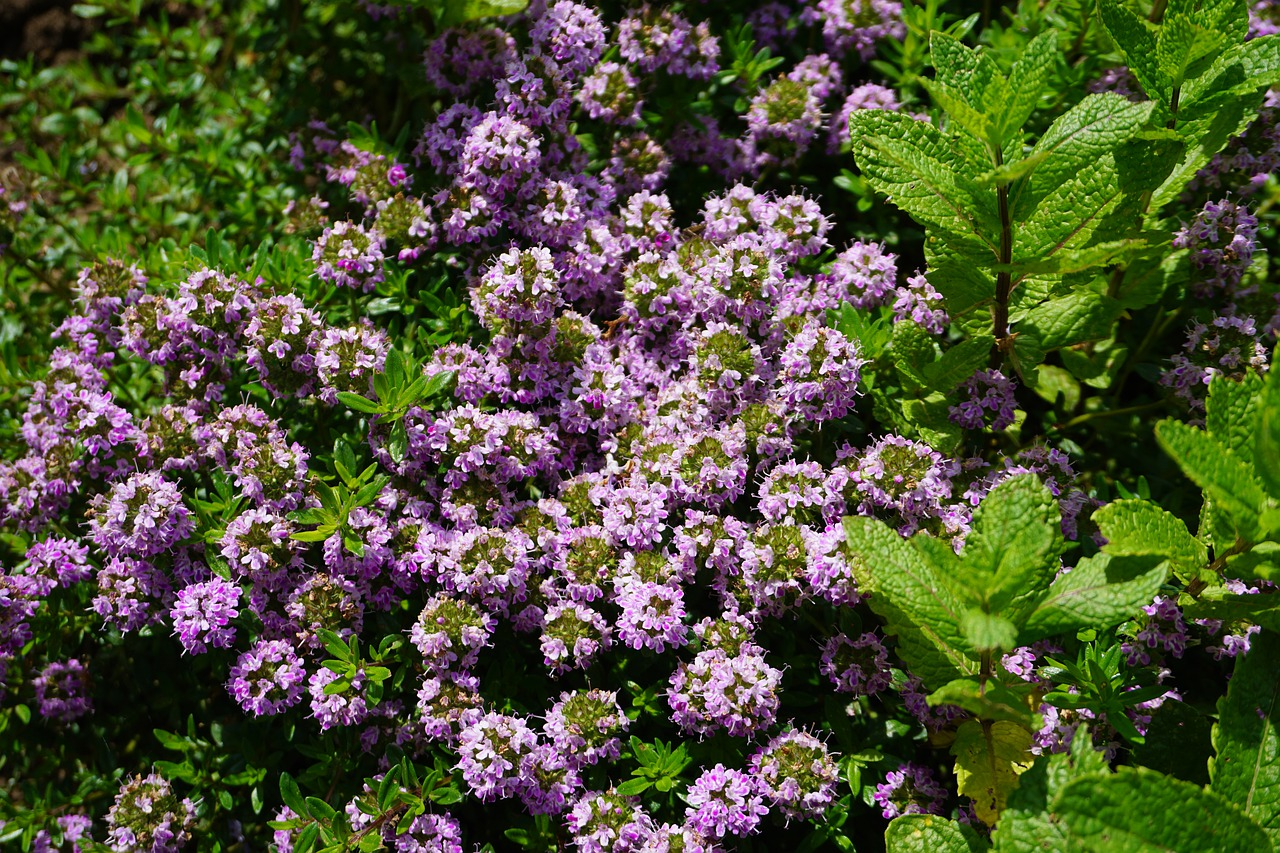
Varieties and Types of Mint Plants With Pictures
Mint is a popular and refreshing herb that is mainly used in tea or cocktails. But it is more diverse than you might think: the mint genus (Mentha) comprises around 20 - 30 accepted species! It is difficult to define these species precisely, as mints tend to form hybrids (bastards). Most mint species are native to humid locations in the northern hemisphere and are great for growing in the shady, damp corners of our gardens. Find out here which mint species grow wild and which mint varieties should definitely not be missing from your herb garden!
Identify Mint Species: Field Mint & Co.
Field Mint (Mentha Arvensis)
Field mint is also known as corn mint or field mint. It can be found in almost all temperate regions of the northern hemisphere. As its name suggests, field mint likes to colonize arable land or nutrient-rich, damp ditches, fallow land and marshy meadows. Like many other types of mint, field mint is edible in small quantities. In larger quantities, the essential oils it contains can become poisonous. However, you can use most mints for tea blends or in salads. Its leaves and the upper part of the stem are slightly hairy and relatively soft. Some shoots therefore tend to grow lying along the ground. Field mint grows less vigorously than other types of mint and usually only reaches a size of 5 to 30 cm/2 to 11.8 in. The flowers of field mint develop as round pseudo whorls in the leaf axils of fully developed leaves. They bloom there from July to October.
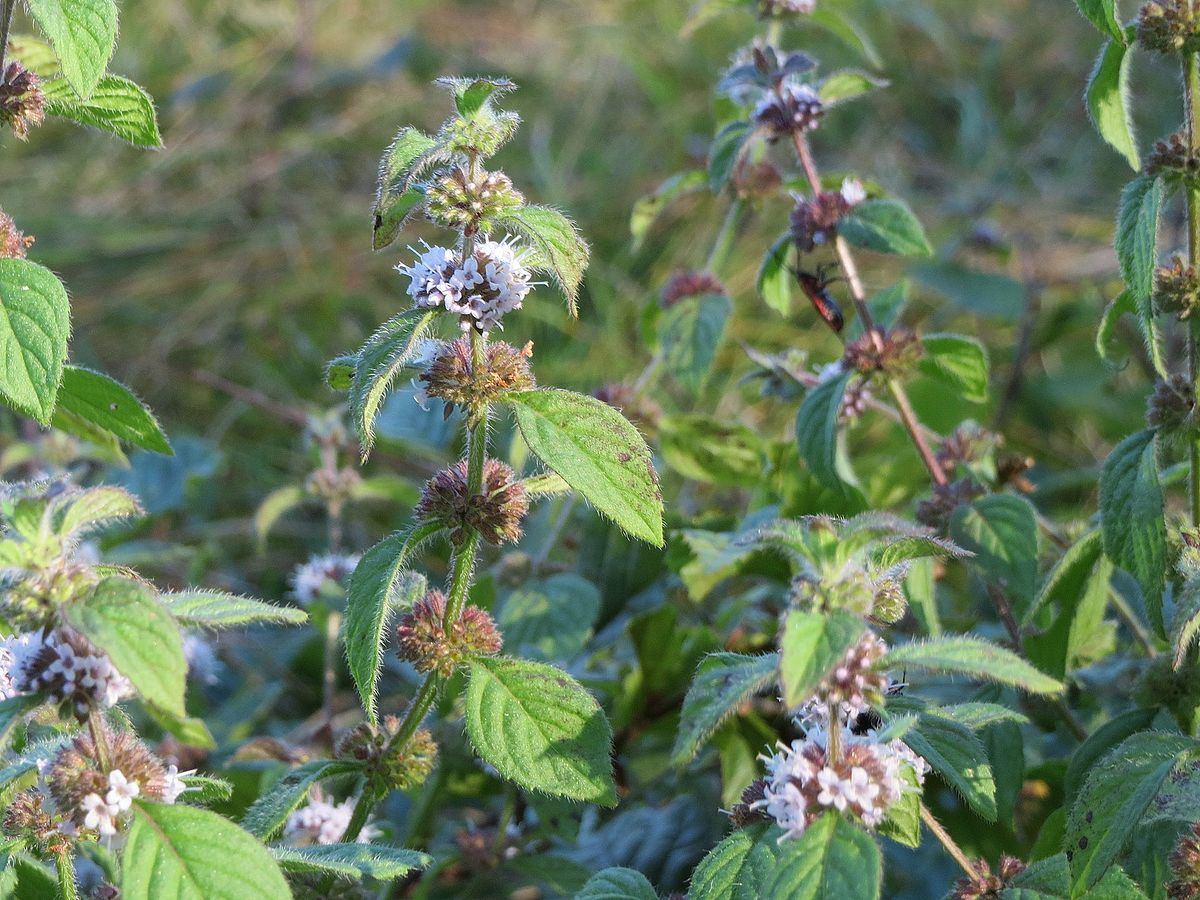
Apple Mint (Mentha Suaveolens)
Apple mint has light green, soft, round-oval leaves, which is why it is often referred to as round-leaved mint. It does indeed have a fruity apple aroma and is therefore popular in teas. It is native to this area and occurs mainly on wet or even temporarily flooded grassland. It therefore copes quite well with changing moisture conditions. Apple mint occurs as a wild herb not only in Europe, but also in Asia and North Africa. It is extremely vigorous and grows up to one meter high. The leaves of apple mint are pleasantly soft due to their hairiness. From July to September, numerous insects and beneficial insects cavort around the white to purple flowers, which form terminal false spikes.
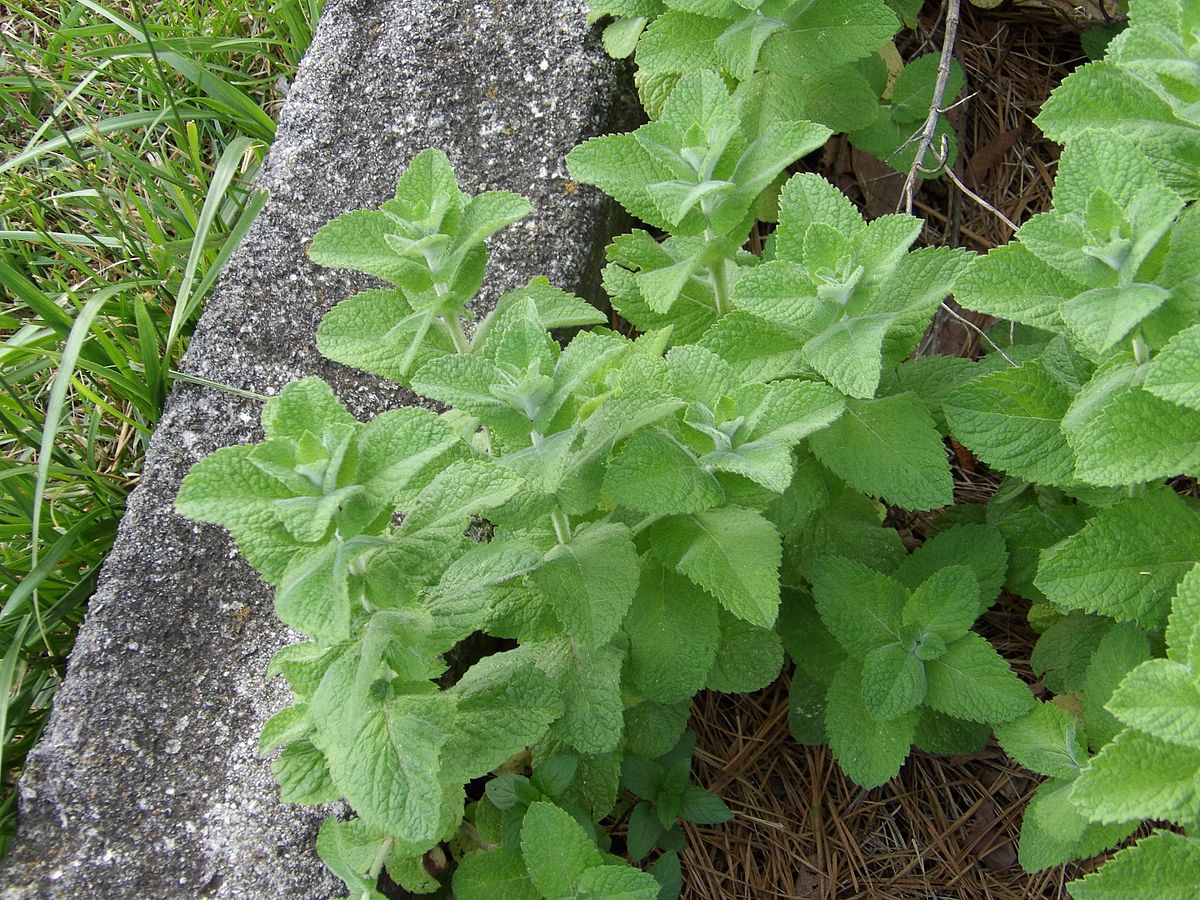
Pole Mint (Mentha Pulegium)
Pole mint is also known as flea herb, as the smell of the plant is said to have driven away fleas in the Middle Ages. It is found from the temperate regions of Europe, across the Mediterranean to northern Ethiopia. Pole mint is relatively rare in Germany, but can be found sporadically in the main valleys of large rivers such as the Elbe, Rhine, Weser, Moselle and Danube. The pole mint is now classified as critically endangered on the Red List and should therefore not be collected from the wild. Fortunately, this is not tragic, as all parts of the herb are poisonous. This is due to the essential oil pulegone, which can even lead to death in large quantities! Although the mint species is also used medicinally by some healers, you should never dose the herb yourself! It is similar to peppermint, but the two can be distinguished from each other by their flowers. In pole mint, the anthers protrude clearly from the flower, while the anthers of peppermint are just as long as the flower. Pole mint also resembles water mint with its round pseudo whorls. However, in contrast to water mint, the flower throat of pole mint is hairy. The leaves of pole mint are also smaller and rougher. Water mint is only found in very damp locations. This type of mint grows to a height of 10 to 50 cm/3.9 to 19.7 in and blooms a delicate purple from May to September.
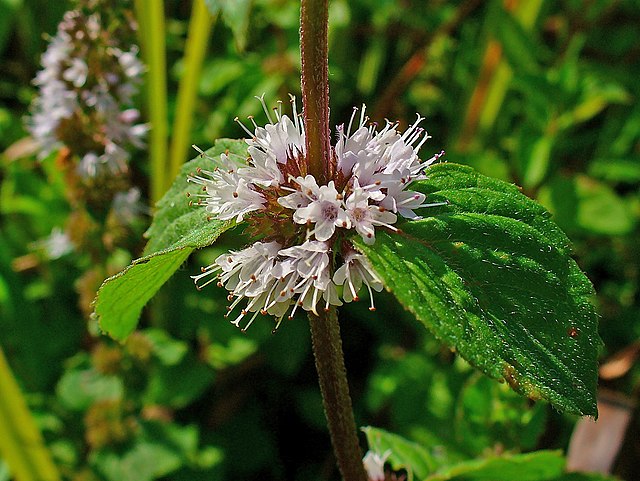
Horse Mint (Mentha Longifolia)
Horse mint, also known as forest mint, is found in temperate zones in Europe, Asia and Africa. In Germany, it is mostly found at higher altitudes such as the low mountain ranges and in lower Alpine regions. On average, the herb reaches a height of around 50 cm/19.7 in; under particularly favorable conditions, horse mint can grow up to 130 cm/51.2 in. Like all mints, it likes nitrogen-rich and moist locations, for example the edges of rivers or farmland. As its botanical name suggests, Mentha longifolia has long, hairy leaves. The flowers appear as multi-flowered false whorls which, like spearmint, form false spikes. These bloom from pink to purple from July to September. Horse mint is also edible in small quantities, but tastes unpleasantly camphoraceous to many due to the essential oil piperitone.
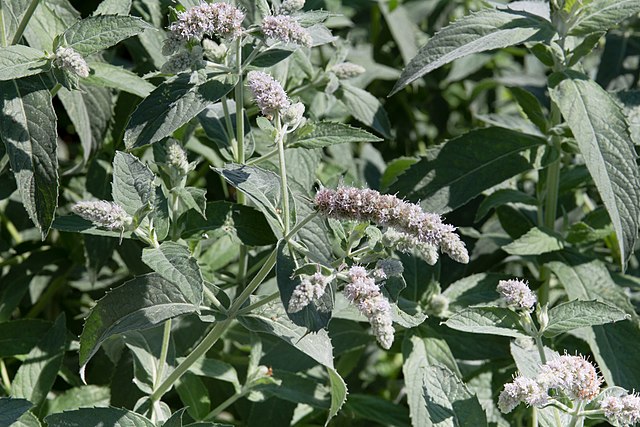
Water Mint (Mentha Aquatica)
The mint species, which originates from Europe, is also known as brook mint. Today it has spread as far as Africa. Here, too, the name reveals where the mint can be found: on banks, damp ditches, moors and wet meadows. It often grows out of the shallow water at the edges of lakes and streams. The marsh plant stays in these places because it spreads its seeds via the water! This allows it to cover long distances in a short time. The marsh plant can also reproduce via runners. Water mint grows up to 60 cm/23.6 in tall and has egg-shaped, light green leaves with slightly toothed edges. The flowers form light pink to light purple, superimposed pseudo whorls and are found in the upper leaf axils and at the end of the shoots. The flowers form (semi-)round balls at the ends. Water mint is edible and was used as a sacred herb by Celtic druids. In the garden, the plant is well suited to greening the edges of ponds.

Classic mint varieties: Spearmint & Co.
Spearmint (Mentha Spicata)
Spearmint is probably the most commonly cultivated species, but is also found in the wild. It is also known as spearmint and gives toothpaste, chewing gum or sweets their fresh taste. It tastes milder and sweeter than peppermint, as the menthol content of spearmint is significantly lower. It is native to Europe, Asia and Africa and is also spreading as a neophyte in North America. In Germany, it is mainly found in nutrient-rich, moist areas, but can also be cultivated in the garden. Spearmint, like almost all types of mint, grows particularly vigorously and forms many runners, which is why you should take care to prevent it from overgrowing your entire bed. A root barrier can help here. From July to September, the herb flowers white to purple in false whorls at the top of the shoots. This gives them a spike-like appearance.
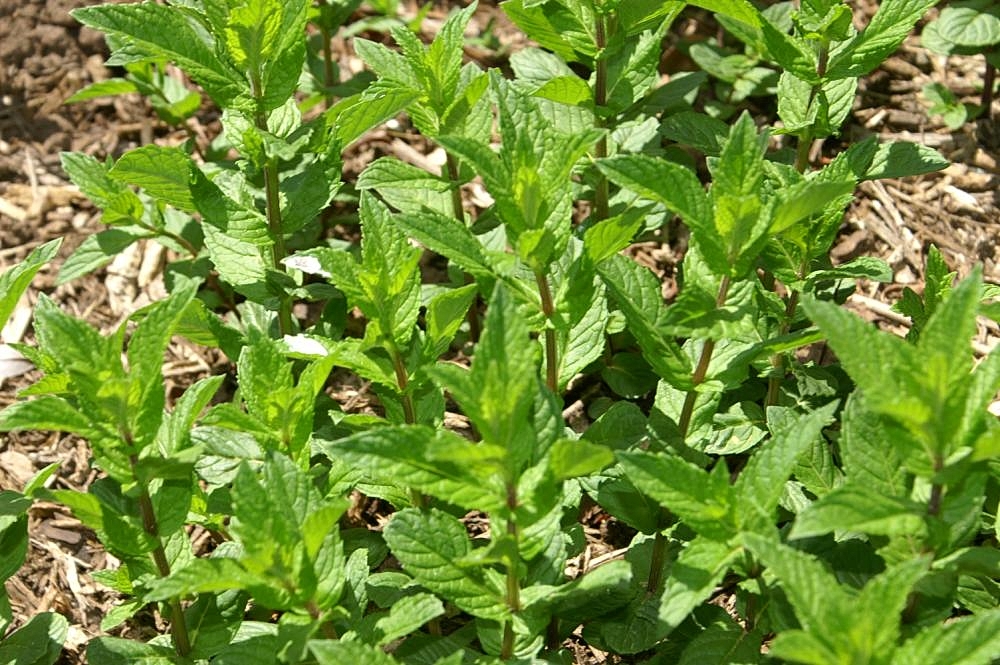
Mojito-Mint (Mentha Nemorosa)
The mild mint species often used for cocktails is known as Hemingway mint or cocktail mint. It probably originated from a cross between Mentha spicata and Mentha suaveolens. It was already cultivated and used in medieval monastery gardens. Like peppermint, cocktail mint can only be propagated by cuttings. Despite its summery flavor, the species is hardy and tolerates temperatures down to - 25 °C/-13 °F. It grows up to 80 cm/31.5 in tall and blooms light purple from July to August. The egg-shaped and toothed leaves of the mint are an intense green. Cocktail mint thrives best in a sunny, nutrient-rich location.
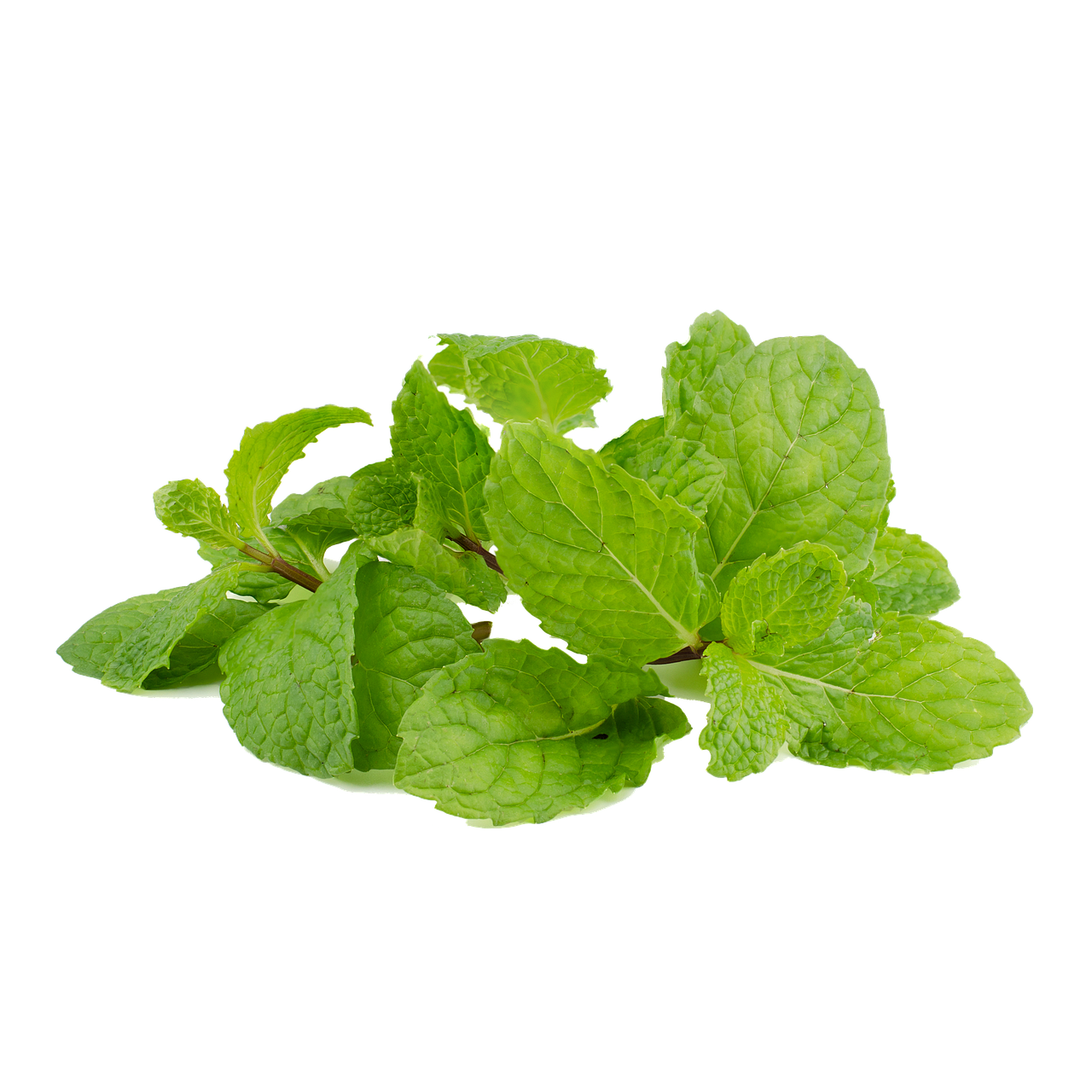
Peppermint (Mentha x Piperita)
Peppermint is probably the best known and most classic of the mint varieties. Its high menthol content gives it a particularly spicy, peppery and pungent taste. As the "x" in the name reveals, peppermint is a hybrid. The hybrid probably arose by chance from the Mentha spicata and Mentha aquatica species. Like other hybrids, peppermint can only be propagated vegetatively via cuttings. The herb has dark green, pointed leaves with serrated edges and often dark purple veins. The stems branch out strongly and are noticeably hairy. Peppermint flowers light pink to purple and forms panicle-like false spikes. The flowering period runs from June to September. The plant is undemanding, hardy and sprouts perennially. However, peppermint thrives best in semi-shady, moist and nutrient-rich locations.
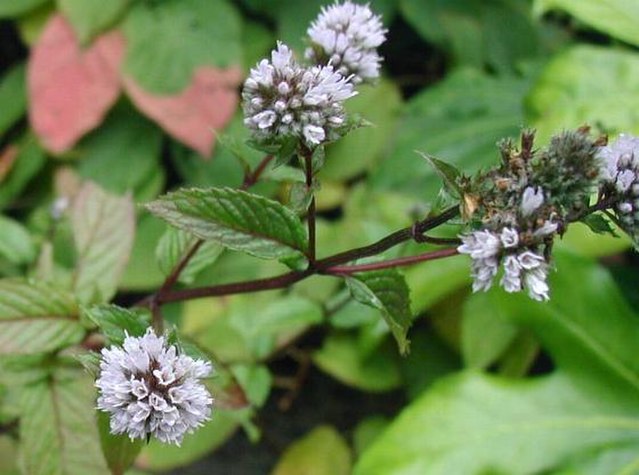
Mint Varieties for Tea: Moroccan Mint & Co.
English Mint (Mentha × Piperita 'Mitcham')
This old cultivar from England has a particularly intense and pungent flavor. In Great Britain, it is traditionally used for sauces, soups, tea and desserts. The variety is vigorous and grows up to 80 cm/31.5 in high. Its leaves are a vibrant green that can also turn red. From June to September, English mint produces small, pink to purple flowers.
Moroccan mint (Mentha spicata var. crispa Morocco)
Originating from North Africa, spearmint is traditionally drunk as a tea with plenty of sugar, especially in Morocco. Moroccan mint is particularly refreshing on hot days. It is often referred to as nana mint, but this name usually refers to a different type of mint (see below). Moroccan mint grows to a height of 30 to 60 cm/11.8 to 23.6 in and develops delicate purple flowers from July to September. The leaves are bright green, lanceolate and serrated at the edges.
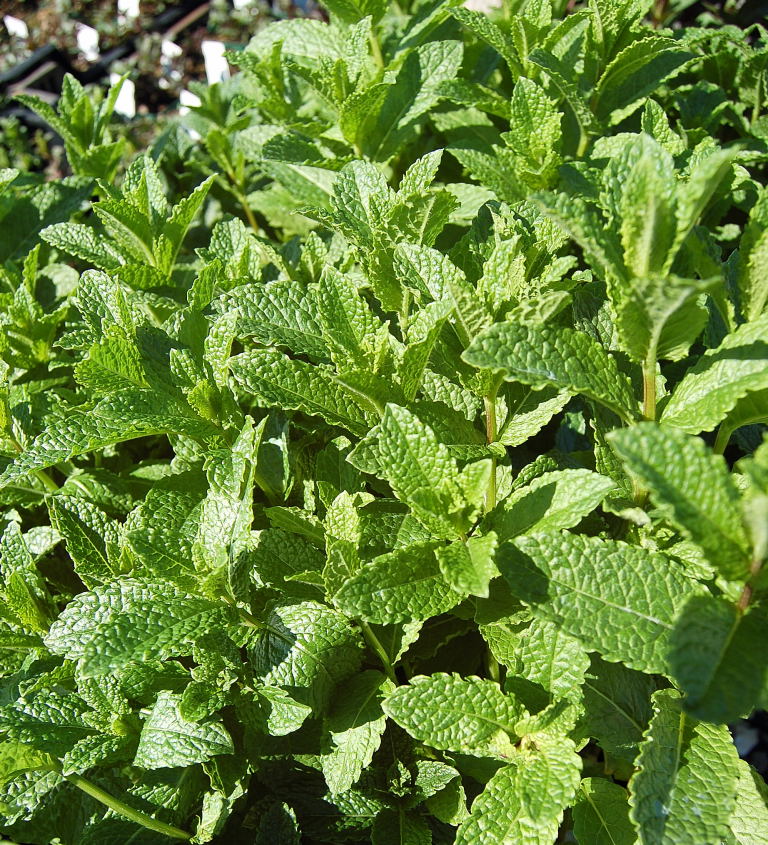
Nana Mint (Mentha Spicata Var. Crispa 'Nane')
When the name nana mint is used, it usually refers to Mentha spicata var. crispa 'Nane' . However, Moroccan mint (Mentha spicata var. crispa Marokko) and peppermint hybrids (Mentha x piperita var. piperita 'Nana') are also referred to as nana mint. The word Nana means "mint" in both Persian and Arabic, but has repeatedly been mistakenly translated as "peppermint". For this reason, the distinction between the "nana mint" variety is not always entirely clear today. In the Middle East and North Africa, nana mint is traditionally drunk with black tea and sugar or used as a seasoning herb for oriental dishes. The plant can grow to a height of 40 to 80 cm/15.7 to 31.5 in and has narrow, curled, rough leaves. The terminal, purple false spikes flower from July to August. The individual whorls on the false spikes are not as densely packed as those of apple or peppermint.
Special, Aromatic Mint Varieties
Pineapple Mint (Mentha Suaveolens Variegata)
Pineapple mint is not only popular in gardens because of its light pineapple aroma, but also because of its two-tone appearance. The green and white leaves were used several hundred years ago in England to border flower beds. Their aroma is ideal for enhancing cocktails, bowls or desserts. The variety is less vigorous than other members of the genus and therefore only reaches a height of 25 cm/9.8 in to a maximum of 60 cm/23.6 in. Pineapple mint is less hardy than other mints and should either be well covered or overwintered indoors in harsh locations.
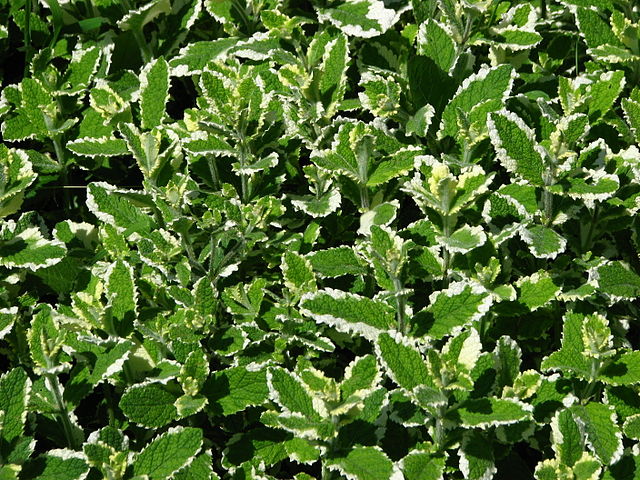
Banana Mint (Mentha Arvensis 'Banana')
Banana mint is a variation of the native field mint that originated in France and, like the latter, has relatively soft stems. It therefore grows partly lying on the ground and only reaches a maximum height of 40 cm/15.7 in. The leaves are also soft and have a slight down. Its aroma is hardly minty, but is reminiscent of banana peel. The slightly sweet note is particularly good in desserts, tea or Asian soups. Like pineapple mint, banana mint is best kept indoors or in another frost-free place over the winter.
Basil Mint (Mentha × Piperita Var. Citrata 'Basil')
As the Latin name suggests, basil mint is a variation of peppermint. It has an aromatic, refreshing taste reminiscent of basil. The variety has a very low menthol content, which is why it tastes very mild and less like mint. Basil mint can easily be used as a substitute for basil in Italian dishes and, unlike basil, is hardy. The variety has purple shoots and forms dark green, soft leaves. It flowers purple from July to August and grows to a height of 40 to 60 cm/15.7 to 23.6 in.
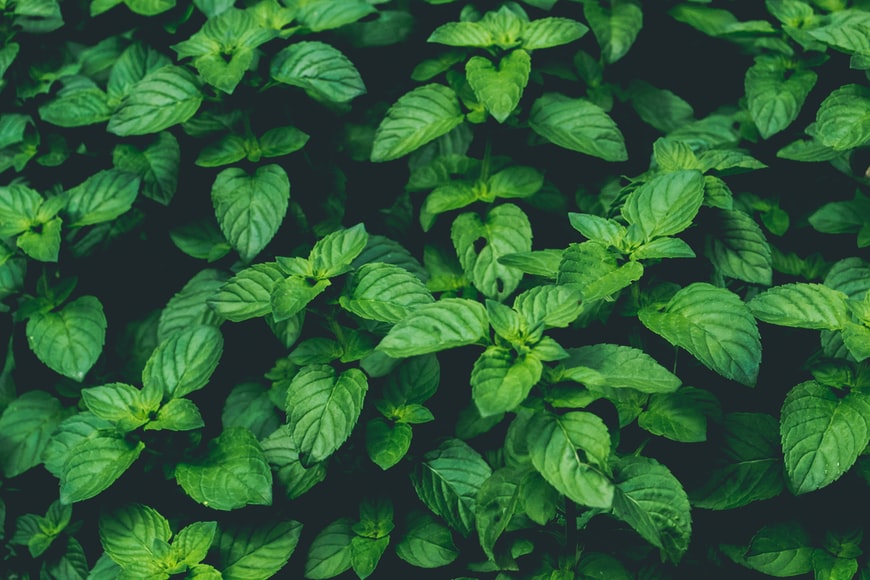
Strawberry Mint (Mentha Species 'Stawberry')
Strawberry mint is a cross between peppermint and spearmint. It is a real specialty because its scent and taste are very aromatic. The harder you rub the leaves, the more intense the strawberry scent. If you touch it lightly, it first smells of cream, then of strawberries and finally of Black Forest gateau. The aroma of strawberry mint makes it ideal for tea, cocktails and desserts. It grows gracefully with thin shoots and rather small leaves. This makes it ideal for growing on the balcony or using as a ground cover in the garden. Strawberry mint blooms purple from July to August. It is perennial, hardy and easy to care for, making it perfect for newcomers to herbs.
Orange Mint (Mentha Piperita Var. Citrata 'Orangina')
Orange mint has a particularly fruity, refreshing aroma that is reminiscent of sweet citrus fruits with a slight minty note. It can be used to refine sauces or salads in an instant. This variety, which is related to peppermint, grows to a height of around 50 to 80 cm/19.7 to 31.5 in and produces dark green, oval-round leaves, some of which turn red. Its shoots are also dark red and bear purple flowers at the tips from July to September. It particularly likes to grow in sunny locations, where its aroma is intensified. Orange mint is therefore also ideal for growing on sunny balconies. However, make sure to water the plants sufficiently!
Chocolate Mint (Mentha x Piperita Var. Piperita 'Chocolate')
You can already guess: the aroma mix of chocolate and mint is reminiscent of After-Eight. The strength of the aroma is perceived differently from person to person, and some people are unable to recognize the chocolate aroma at all. The dark green, shiny leaves contain a lot of menthol, which provides a certain pungency. You can use chocolate mint for tea, jellies or desserts. The 40 to 60 cm/15.7 to 23.6 in tall plant blooms light purple between July and September. The variety is perennial and hardy.
Lemon Mint (Mentha Gentilis Var. Citrata)
Lemon mint also gives off an intense citrus scent when touched. It has a very high menthol content, which gives the lemony freshness a particularly tart note. It is a variety of spearmint. This originated from a cross between spearmint (Mentha spicata) and field mint (Mentha arvensis). Lemon mint can also be found in the trade under the name "Mentha piperita var. citrata" because frequent cross-breeding and taxonomic re-sorting led to inconsistencies in the naming. Mexican giant hyssop (Agastache mexicana) is also sometimes sold under the name lemon mint, although it comes from a different genus than mint. The "real" lemon mint grows up to 40 cm/15.7 in high and is perennial and hardy. Its leaves are rather light green and more delicate than those of most other mints. It flowers from July to September in pink to purple and attracts numerous insects! If you plant it on your balcony or near your patio, its scent is said to keep mosquitoes away.

Want to get helpful gardening tips all year round and plan your own beds in the best possible way? Then register here or download the Fryd app for Android or iOS.
Fryd - your digital bed planner
Cover picture: Littlebeth on pixabay.
Isabell
Current Topics in the Community

#red , #tuesday

Liked 1 times
#testpostcount

Dec 2025
Popular Articles

Companion Plants for Carrots: What (Not) to Plant With Carrots

Companion Plants for Celery : What (Not) to Plant With Celery?

Strawberry Types: List of Best Strawberry Varieties

Companion Planting With Strawberries: Companion Plants and Planting Plan

Basil Varieties & Types at a Glance

What to Plant With Cabbage: Good and Bad Companion Plants

Fertilizing Strawberries: Home Remedies & Natural Fertilizers at a Glance

Growing Sweet Potatoes: Tips on Cultivation & Companion Plants

Companion Plants for Kitchen Herbs: Chives, Parsley & Co

What Herbs Can Be Planted Together?